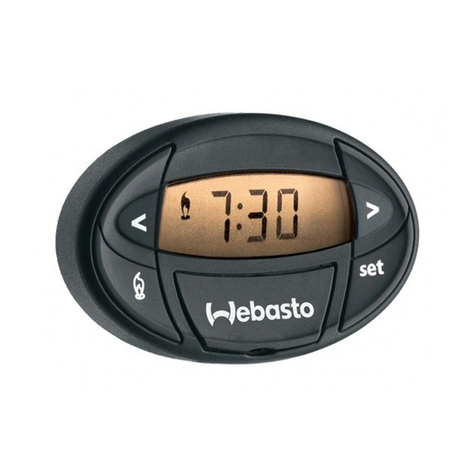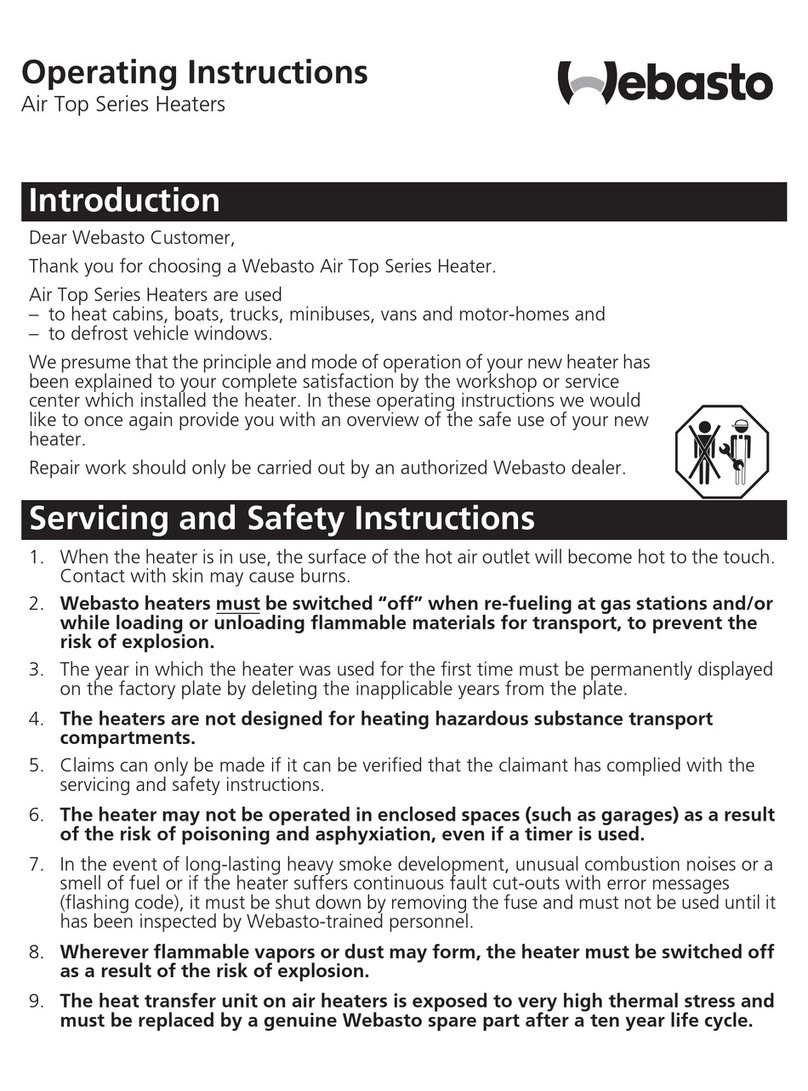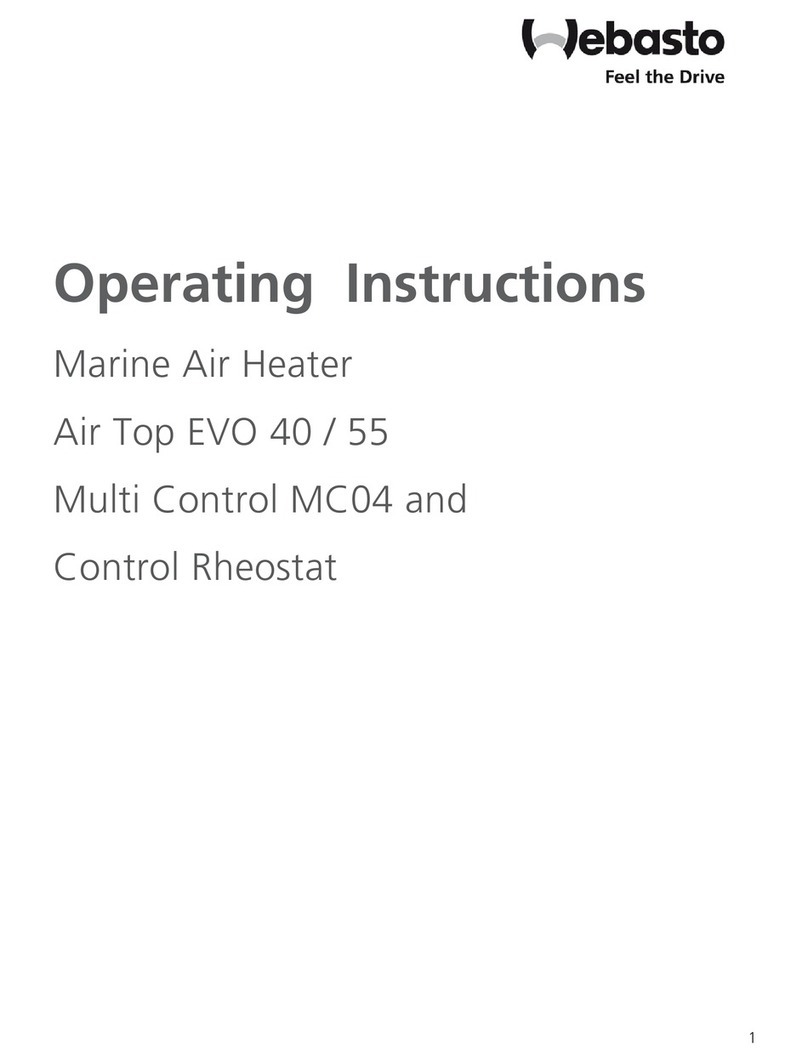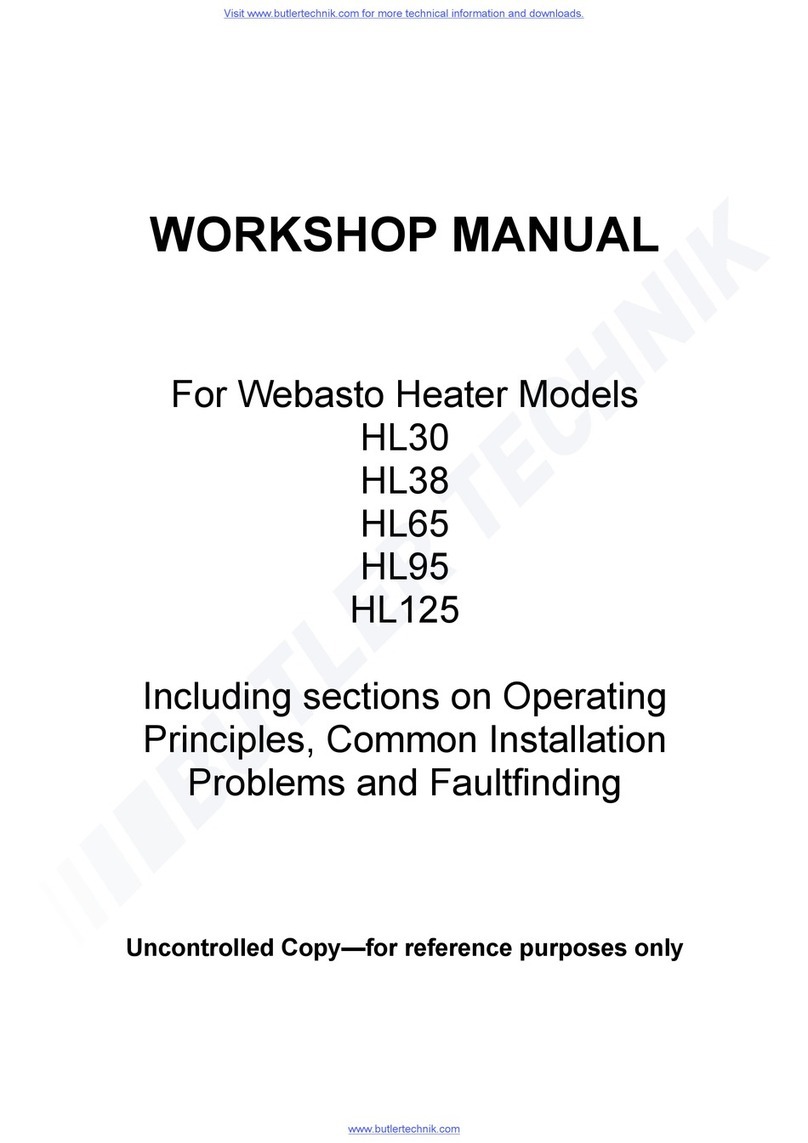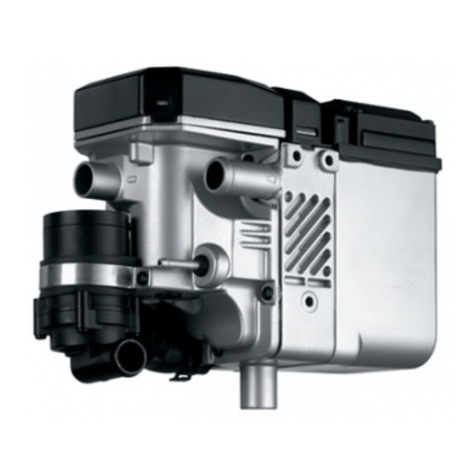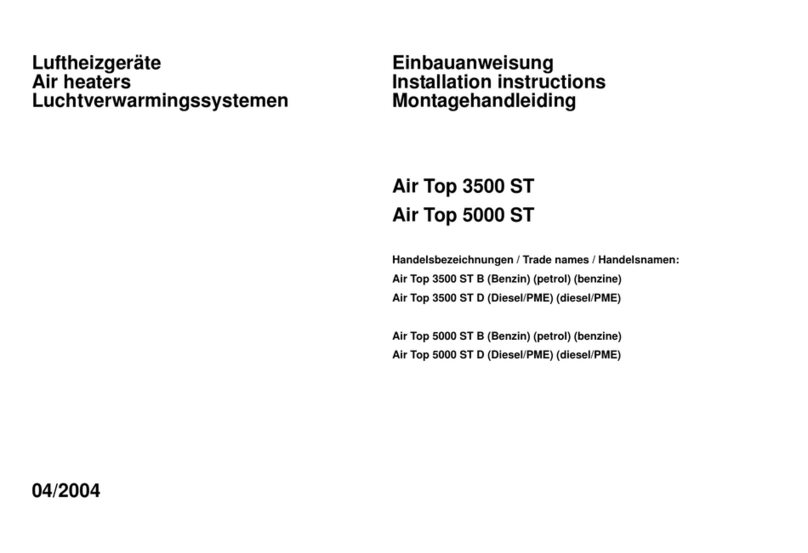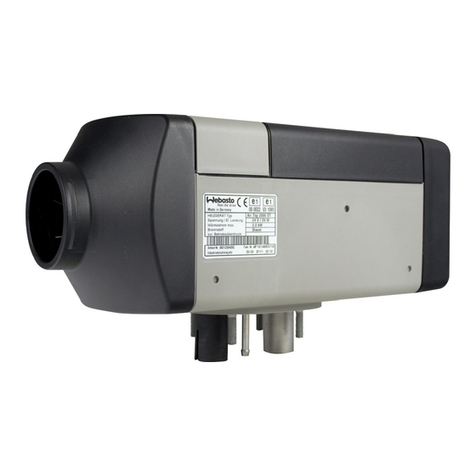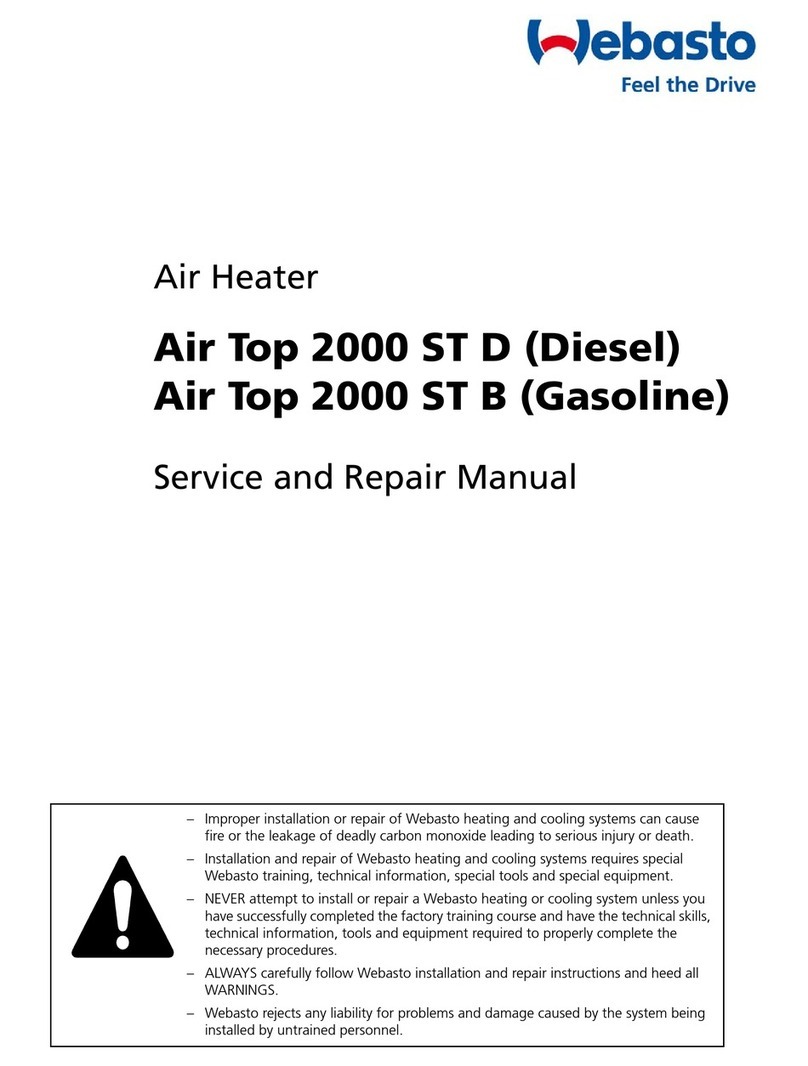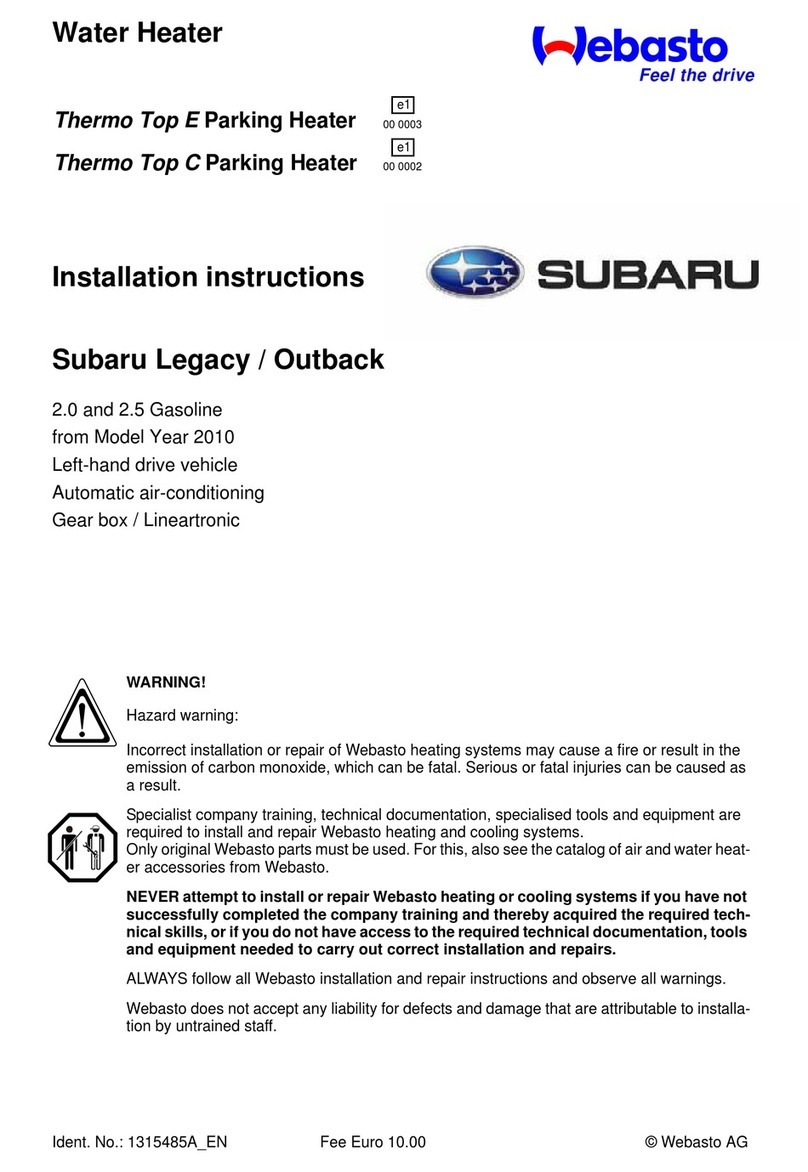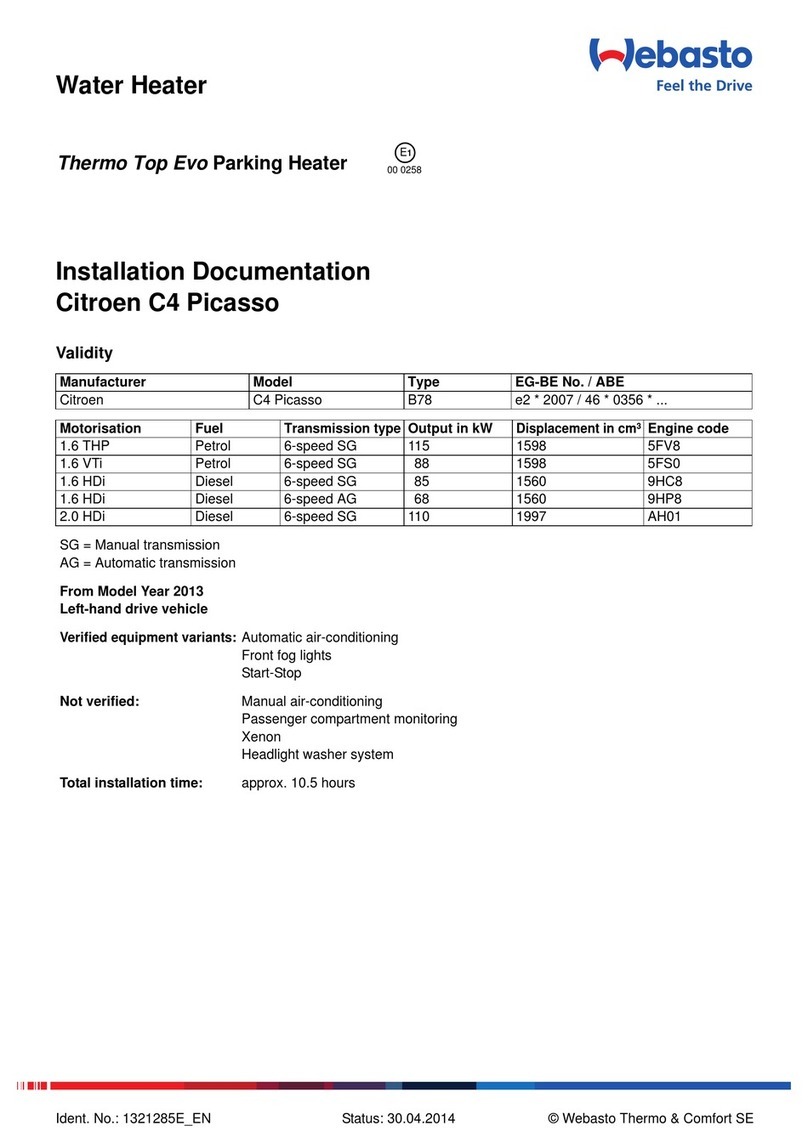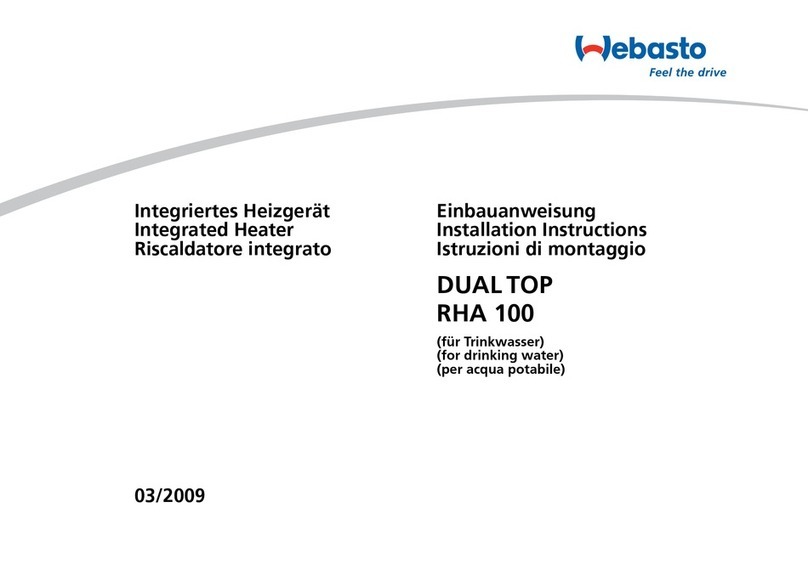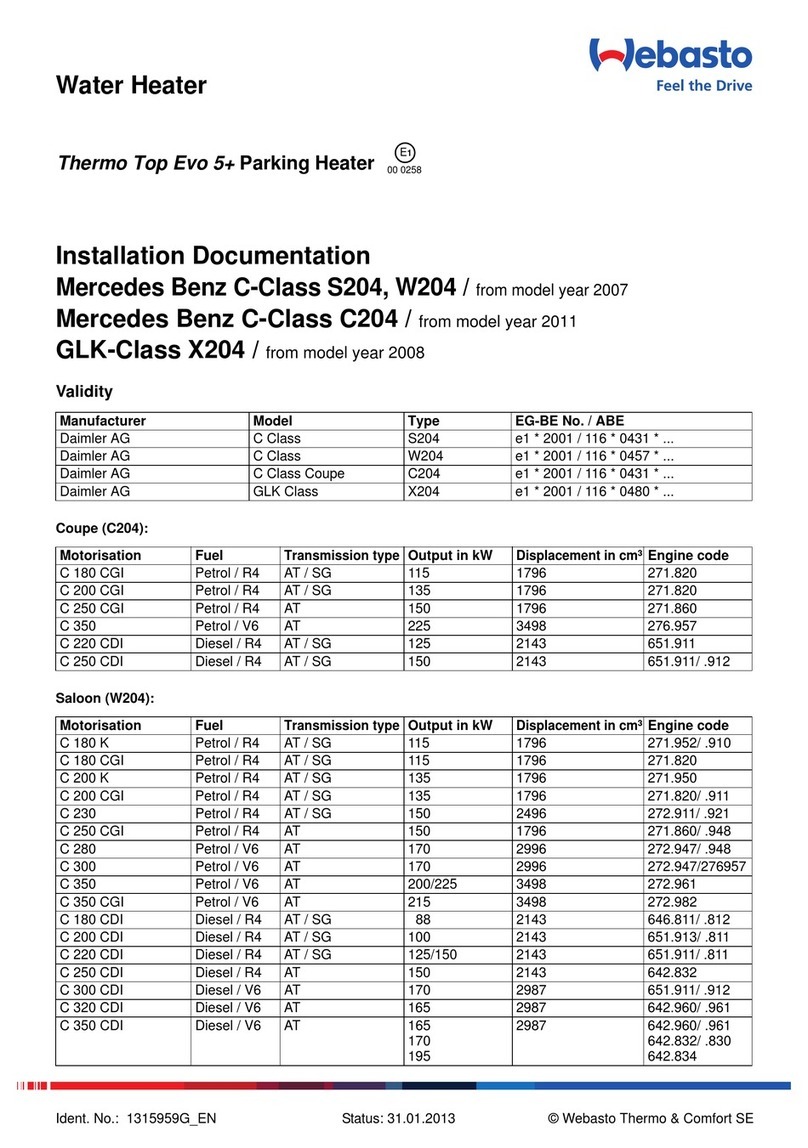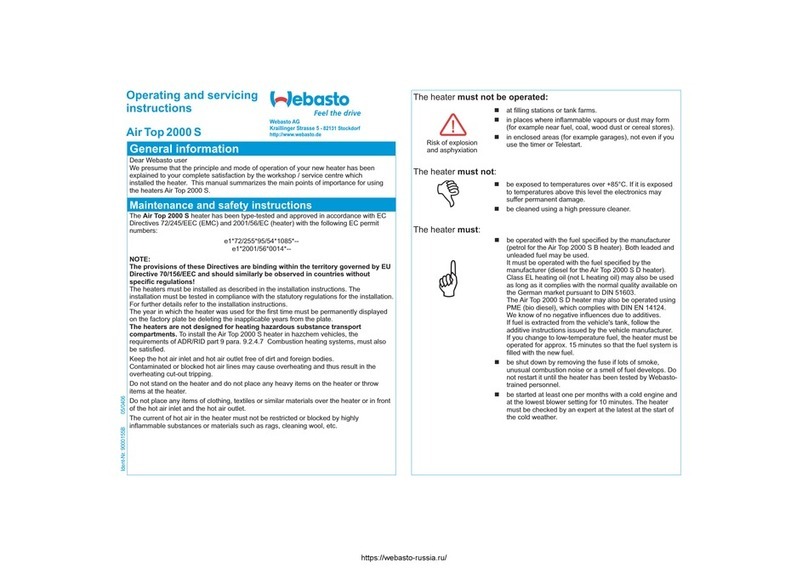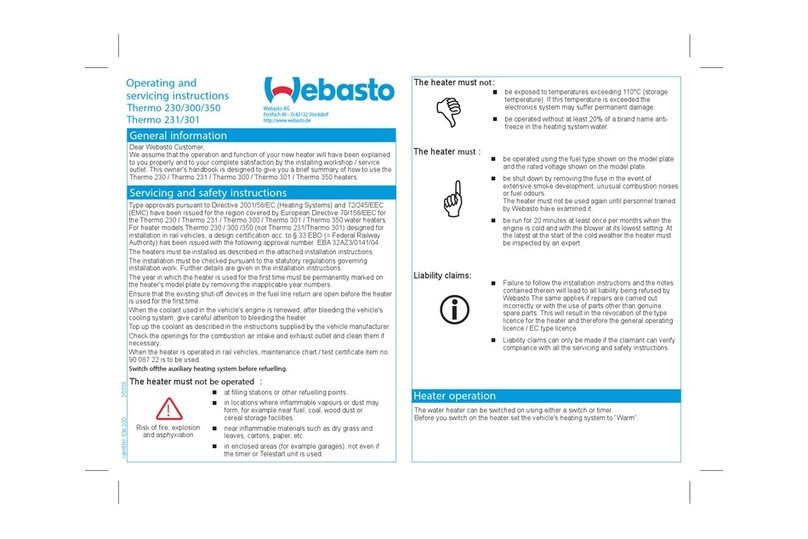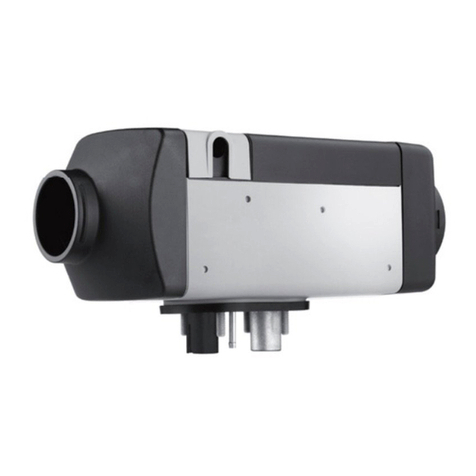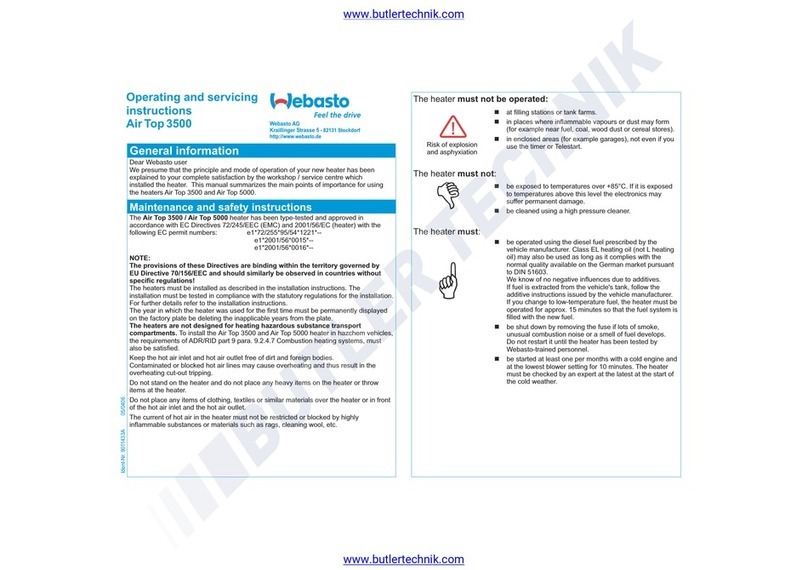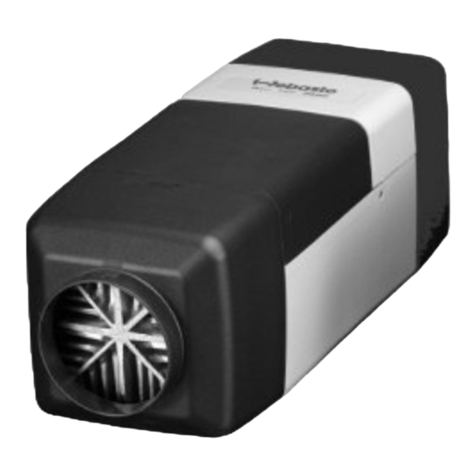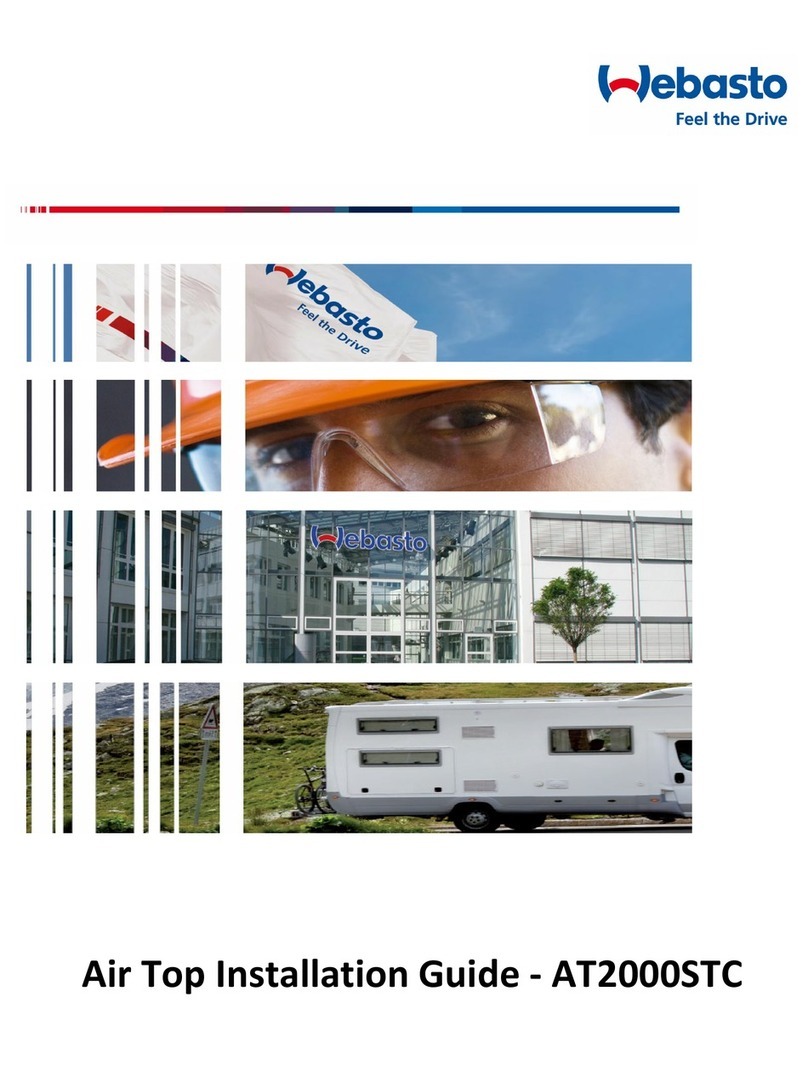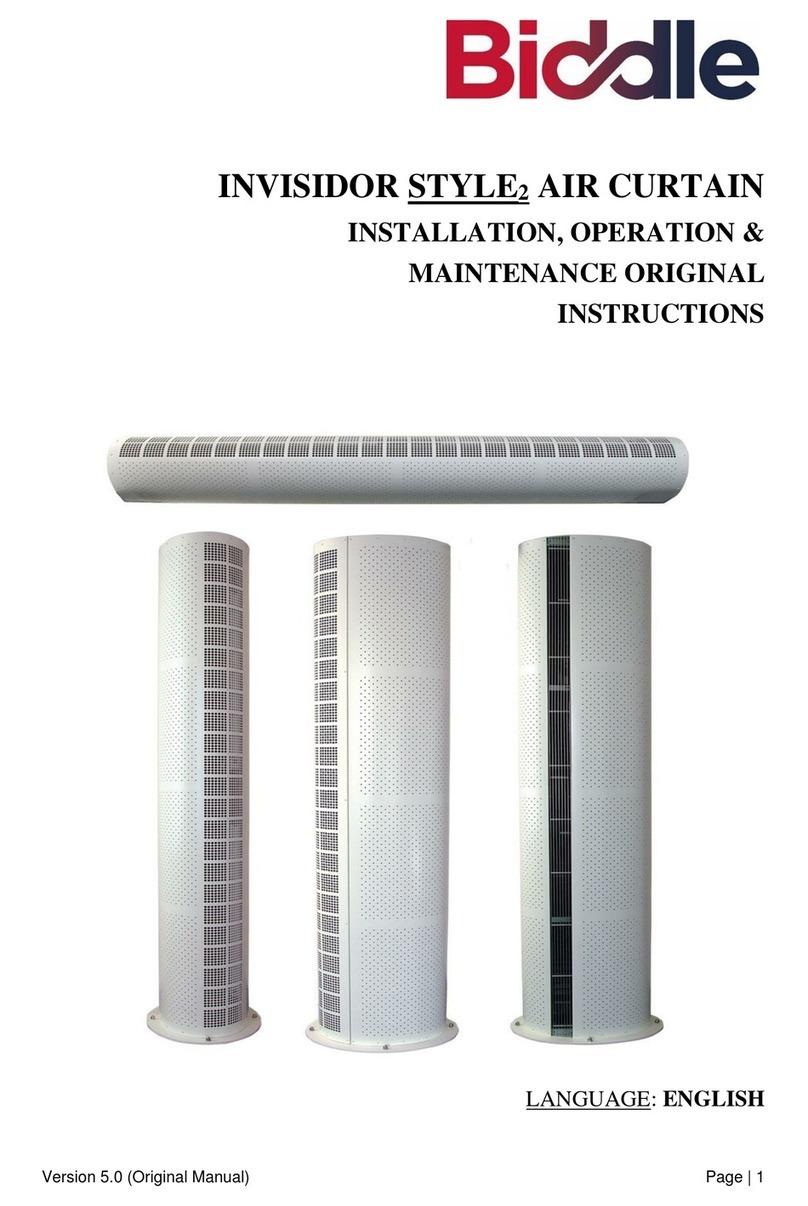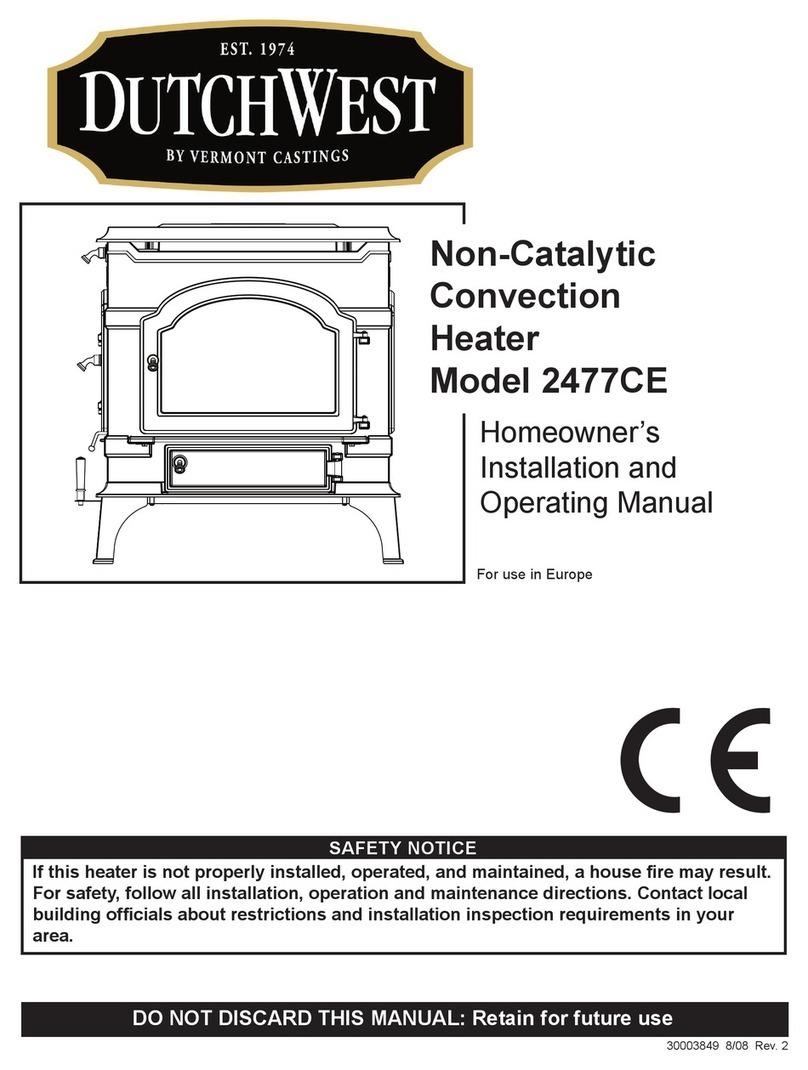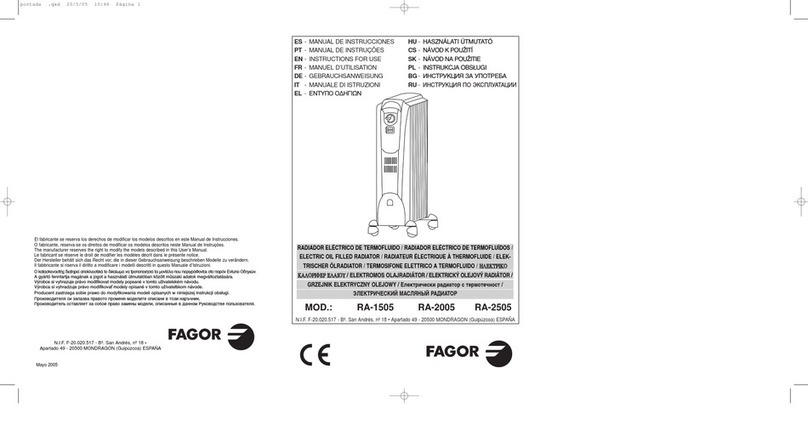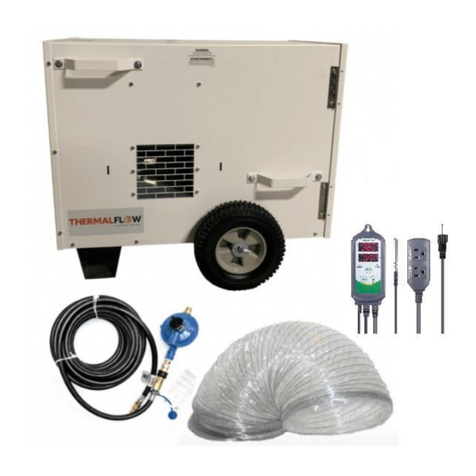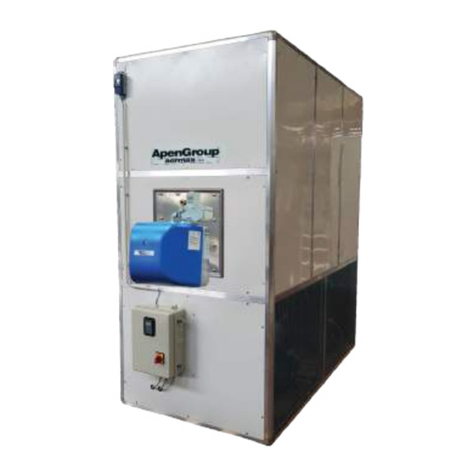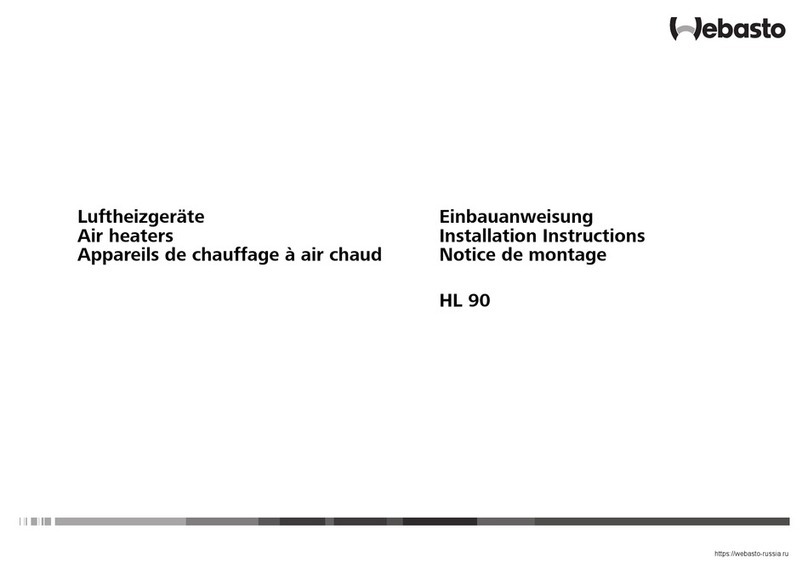
Air Top 2000 STC 1 Introduction
101
1 Introduction
1.1 Contents and purpose
This workshop manual is designed to assist trained personnel
in repairing both the petrol and the diesel versions of the Air
Top 2000 STC air heaters.
1.1.1 Use of air heaters
The Webasto Air Top 2000 STC air heaters are designed:
– to heat cabins, boats, commercial vehicles, minibusses,
vans/transporters, ambulances and motor homes.
– to defrost vehicle windows.
The are not approved for heating cargo areas used to carr
dangerous goods/hazardous substances.
The heaters operate independentl of the engine and are
connected directl to the fuel tank and the electrical s stem
of the vehicle.
The ma be used for vehicles with either water or air-cooled
engines.
1.2 Meaning of signal words
Throughout this manual, the signal words CAUTION, ATTEN-
TION and NOTE have the following meanings:
CAUTION
This signal word is used to highlight operating instructions or
procedures which, if not followed or not followed correctl ,
ma result in personal injur or fatal accidents.
ATTENTION
This signal word is used to highlight operating instructions or
procedures which, if not followed or not followed correctl ,
ma result in damage to the equipment or its components.
NOTE
This signal word is used to draw our attention to a special
feature.
1.2.1 General safety information
The mouth of the exhaust pipe should be installed facing
downwards, to the side or, if the exhaust pipe passes under
the floor of the vehicle, up to the side or rear limit of the
driver's cab or of the vehicle.
The function of important parts of the vehicle must not be
adversel affected. It must not be possible for condensation
or water to collect in the exhaust pipe. Drain holes ma be
used.
The electrical cables, switchgear and control units for the
heater must be arranged in the vehicle such that their func-
tion is not impaired under normal operating conditions.
Compliance with §§ 45 and 46 StVZO (German road vehicle
registration regulation) must be ensured for the installation
of fuel lines and the installation of additional fuel tanks.
The main points of this regulation:
– Fuel lines must be designed in such a wa that torsion in
the vehicle, engine movements and similar do not have a
negative effect on their durabilit . The must be
protected from mechanical damage.
– Parts that carr fuel must be protected from heat that
could adversel affect their function and positioned such
that dripping or evaporating fuel cannot collect or ignite
on hot parts or on electrical equipment.
The heat exchanger of the air heater can e used for a
maximum period of 10 years and must then e replaced
with a genuine spare part y the manufacturer or an
authorised workshop. A la el must then e affixed to
the heater showing the date of sale and the wording
"Genuine Spare Part".
When ou change the heat exchanger it is also necessar that
ou replace the overheating protection element (overheating
sensor) to prevent possible malfunctions caused b using the
old overheating sensor.
The Air Top 2000 STC heaters are prepared for interior instal-
lation and and sealing directl on the driver's cab floor or
wall. Non-release connections must be used in the interior for
combustion air and exhaust pipes for Webasto accessories.
The seal between the heater mounting and the vehicle floor
must alwa s be installed otherwise harmful exhaust gases
ma get into the vehicle interior.
The heating air and combustion air intake openings must be
positioned in such a wa that no water can enter them when
the vehicle is driven through water at permissible levels.
The heater must not be installed in the driver's or passenger's
compartment of busses (vehicle class M2 and M3). If the
heater is nevertheless installed in such a place, the casing
must be tightl sealed from the vehicle interior. The casing
must have sufficient external ventilation to ensure a maxi-
mum temperature of 40 °C is not exceeded in the box. Faults
ma occur if the temperature exceeds this level.
Due to the risk of explosion, the heater must be switched off
at filling stations and facilities.
Due to the risk of explosion, the heater must be switched off
wherever inflammable vapours or dust can form (e.g. in the
vicinit of fuel, coal, wood dust or grain stores or similar).
Due to the risk of asph xiation and poisoning, the heater
must not be operated in enclosed areas such as garages and
workshops without an emissions extraction s stem even if
ou use the timer.

